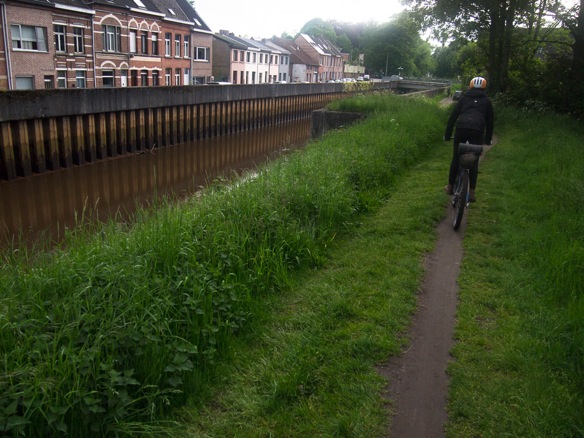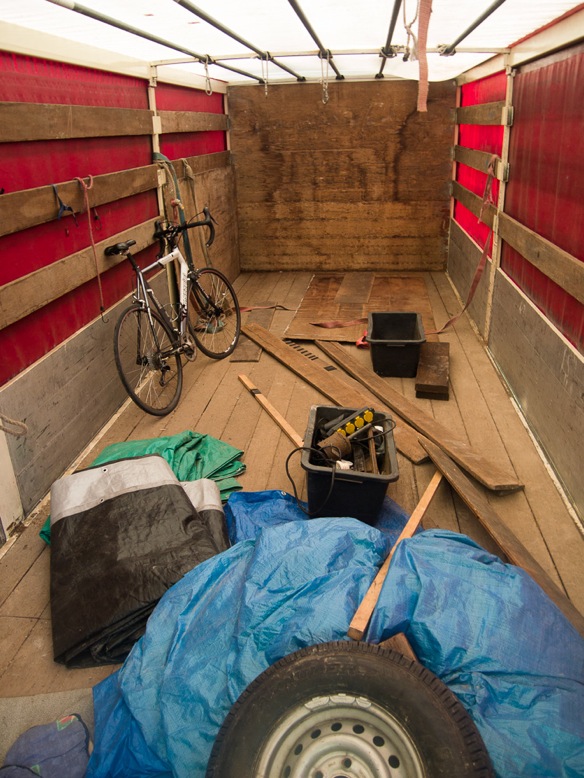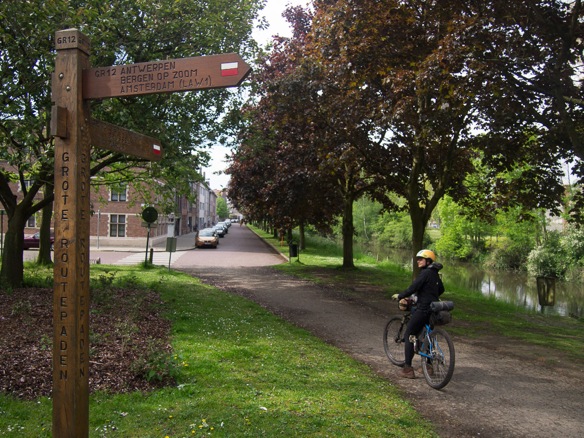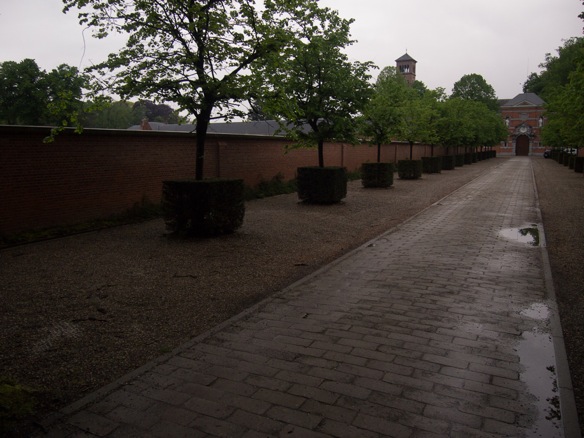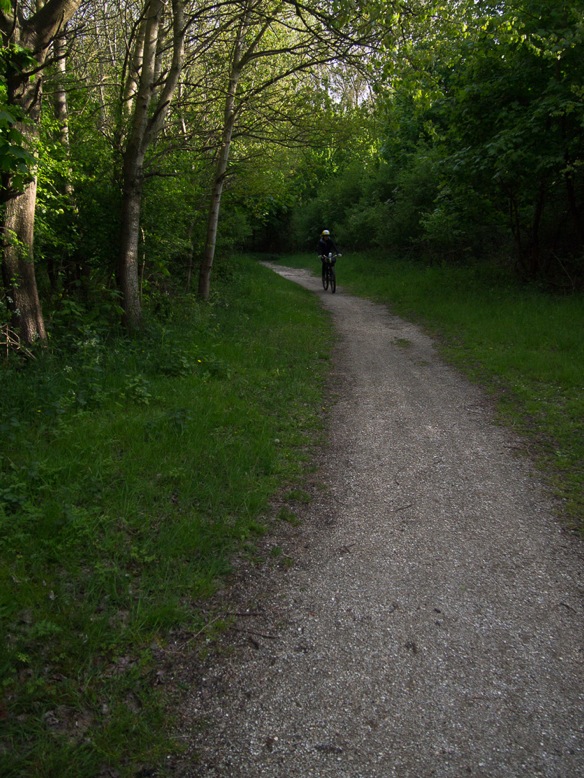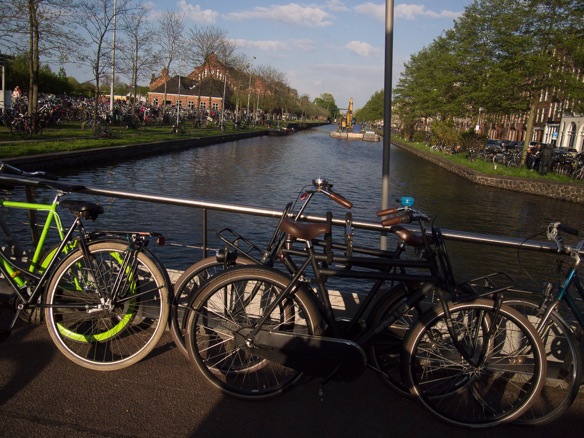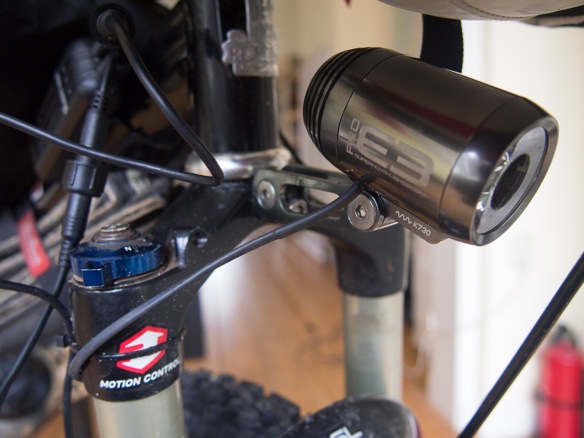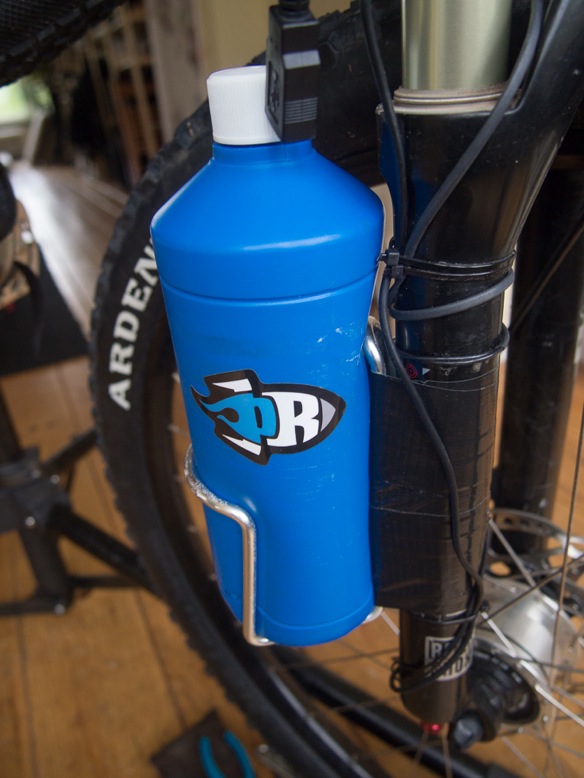
The GR5– locally called the LAW-5, Deltapad, or the E2– is an elusive dream. Once on the trail, as a hunting dog on the scent of something good, we keep our eyes peeled and our noses to the ground. If we can keep our tires and eyes pointed toward the next red and white blaze, the rewards are great. When we lose the trail, which has happened thus far with some frequency, we simply follow the next logical signed cycling route, bike path or walking path. Perhaps the best part about following the GR5 is that we never ride with traffic. And when we lose the trail, we still aren’t really riding in traffic. Some routes follow dedicated cycling lanes alongside a street, but even this is hardly ‘in’ or ‘with’ traffic in this country– drivers and cyclists are equally respectful of space and life and the dance between the two never raises an eyebrow.
But our focus is on the GR5, a long distance walking route from the North Sea in the Netherlands, to the Mediterranean at Nice, France. Between these two points are Belgium and Luxembourg, and a whole lot of time in France; the route includes the Ardennes, the Jura, and the Alps; and the entire trail is signed with red and white blazes, as are other GR trails, while guidebooks and maps are also available. It has only been a few days, but so far the diverse riding has done nothing but put smiles to our faces.
We left Hoek van Holland along this signed GR route, although it seemed to be going another direction. We abandoned in favor of cycle paths and a place to stay in Rotterdam. We would return to Maaslius to reconnect with the route.



At Maasluis, a ferry crosses the Maas river. As we disembark, we spot red and white blazes and spend the first km along neighborhood singletrack. Much of the riding reminds me of riding as a kid.

The GR5 follows paved and unpaved cyclepaths, as well as established walking routes (like unpaved walkways near the city), and sometimes very small lanes.



Camping opportunities abound, especially along the waterfront. This waterway was in use by many recreational canal boats.



The trail is locally called the ‘Deltapad’, or delta path, named for the delta region of several rivers that drain continental Europe into the sea. The trail follows a lot of grassy doubletrack along dikes and dams.

No reason to buy a map in the Netherlands. Signs, numbered routes and point-to-point routes makes navigation easy. I have a basic map of the country for reference. Mostly, we travel without a map, which is liberating. Public map displays serve to keep us traveling in a uniform direction. Still, while chasing red and white blazes we have made at least a few circles.

Mountainbikeroute (aka VTT, BTT, or MTB) is an exciting word. Some Dutch singletrack along the GR5, near the Voornes Duins.

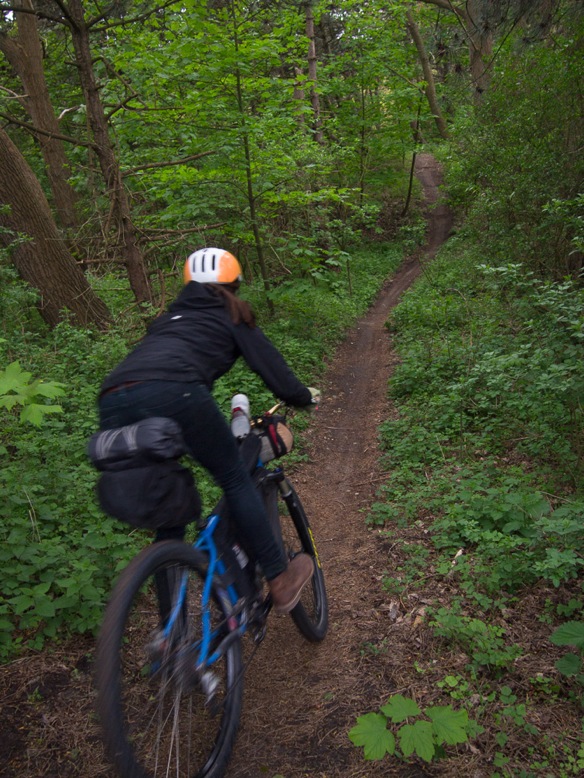

To a coastal overlook, like California or elsewhere we have been.
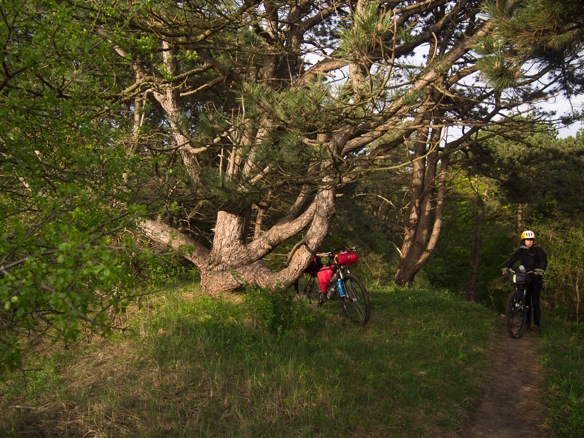

Where to sleep? This looks good.





Butter, salt, shallots, tortellini, and herring in tomatensaus.


The next morning, we wind through dunes and coastal forests, making a full loop back to this point. Retracing our steps, we find exactly where we went wrong. Retracing our steps was a little muddy.


And sandy.

Finally on our way, the trail leads to the beach, which was partly rideable in the intertidal zone. Thinking of the Pugsley, or even those bold 29+ wheels I built for Cass’ Krampus. Just a little more rubber would have helped.




Within a few moments, we are back in town. Historic canals and churches one minute, sandy forested singletrack the next– nothing to complain about.


It has been a wet week along these coastal islands. Still, more dry than wet is the realization that time is better spent outside, than staring at the weather channel.


Our camp last night atop a sandy hill, tall pines breaking wind from the Nordzee.

We’ve lost the GR5 for a moment, realizing that we had followed another walking trail. We will rejoin the route in Bergen op Zoom, headed towards Maastricht, NL through Belgium. Three and four dollar bottles of organic wine end every day. Coffee and stroopwafels begin the day.

































